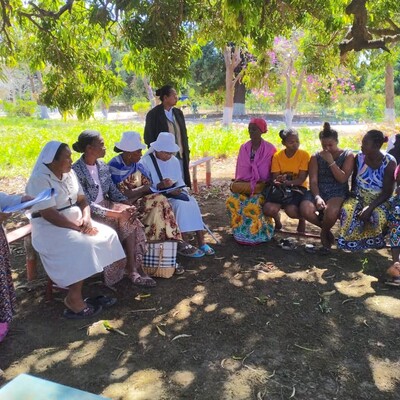
New study examines effectiveness of grassroots dog vaccination campaigns against rabies in Kenya
World Zoonoses Day is commemorated on 6 July every year to mark the day in 1885 when Louis Pasteur successfully administered the first vaccine against rabies, a deadly zoonotic disease. The day is also an occasion to raise awareness of the risk of zoonoses, infectious diseases that can be spread between animals and people.
On this year’s World Zoonoses Day, we highlight a new research study published in PLOS Neglected Tropical Diseases (July 2020) that reports on the development, implementation and effectiveness of grassroots mass dog vaccination campaigns against rabies conducted in 2015, 2016 and 2017 in Laikipia County, Kenya.
According to the World Health Organization, rabies kills tens of thousands of people every year, mainly in Asia and Africa. Globally, rabies causes an estimated cost of US$ 8.6 billion per year. Dog bites are responsible for 99% of all cases of human rabies. Therefore, vaccinating dogs is the most cost-effective way to prevent rabies in people.
The research study found that while grassroots volunteer-based dog vaccination campaigns against rabies can be useful, these efforts need to be supported at a larger scale by county and national governments for a more sustainable approach towards eradicating the disease. Below is the author summary.
“Given the importance of mass vaccinations of domestic dogs towards eliminating human rabies in Africa and the site-specific challenges facing such campaigns, additional studies on the development and implementation of such efforts are needed.
One mechanism of mass vaccination lies in grassroots efforts that often begin at a very local scale and either develop into larger campaigns, remain local, or cease to persist past several years once interest and funding is exhausted.
Here, we discuss the development of a grassroots campaign in Laikipia County, Kenya from its local inception to its development into a county-wide rabies elimination effort.
Our results highlight challenges associated with achieving the targeted 70% coverage rate, including a need for consistent and systematic demographic monitoring of dog populations, limitations of the central point method, and logistical and financial challenges facing a volunteer-based effort.
Serious political commitment from both the local and national governments are necessary to take the budget beyond what a crowdfunded campaign can raise, including availability and access to quality dog rabies vaccines.
Without such outside support and substantial time to grow, grassroots campaigns might be better relegated to raising awareness and vaccinating dogs in small communities to protect those communities directly, without contributing to the broader ecosystem-wide transmission-stopping aim often sought by government human health and veterinary organizations.”
Citation
Ferguson, A.W., Muloi, D., Ngatia, D.K., Kiongo, W., Kimuyu, D.M., Webala, P.W., Olum, M.O., Muturi, M., Thumbi, S.M., Woodroffe, R., Murugi, L., Fèvre, E.M., Murray, S. and Martins, D.J. 2020. Volunteer based approach to dog vaccination campaigns to eliminate human rabies: Lessons from Laikipia County, Kenya. PLOS Neglected Tropical Diseases 14(7): e0008260.
Photo credit: A pastor and his dog, Yabello, Ethiopia (ILRI/Camille Hanotte)






















